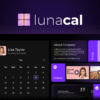What is digital twin?
A digital twin is a virtual replica of physical resources, particularly objects, people, places, infrastructures, devices, etc.
We can define it as a digital “clone” that is created for multiple purposes.
Thanks to the 3D representation of all the characteristics, a digital twin contains all the information of the physical object at aesthetic, mechanical, geometric and electronic level.
What’s the digital twin for?
A digital twin today is primarily used in Industry 4.0 thanks in part to the growth of the Internet of Things (iOt) but is gaining traction in many other industries.
Having a detailed three-dimensional object allows :
- do experimentation activities by testing different variants, creating prototypes and trying out substantial changes
- create artificial intelligence algorithms that can simulate emergency situations or new work processes
- do predictive work so as to predict in advance abnormal behavior, errors or risks
- create a database of individual objects with all the changes over time in order to visualize and study the evolution of the structure
How is a virtual twin made ?
There are multiple technologies to digitize an object, in recent years the evolution has cut costs and made it much easier to realize.
For real estate and external environments we often use drones and photogrammetry, for internal objects laser scanners that can capture even the smallest details.
With the advent of the new iPhone 12 Apple has included in the pro version a LiDar sensor that allows to generate point clouds with a disarming simplicity, this process will lead to a further evolution of the technology.
Fields of application for the digital twin?
As mentioned above, the technology can be used in many fields, to give some examples in the field of industry provides an exceptional tool for testing products and simulate complex behaviors, in the world of real estate will allow the creation of virtual environments to visit through computers, smartphones and virtual reality helmets, in the field of cultural heritage a 3D reconstruction at regular intervals allows to understand the state of degradation and anticipate structural interventions, in the world of utilities to have the representation of buildings with plants allows to better manage maintenance, etc..
Who develops solutions for the digital twin?
There are not many companies that operate in this sector, with regard to the digitization of buildings and outdoor environments to be carried out with drones, several times we have relied on Sigeo of Rome, with regard to virtual and augmented reality instead esimple of arezzo that we treated in this post.












Recent Comments